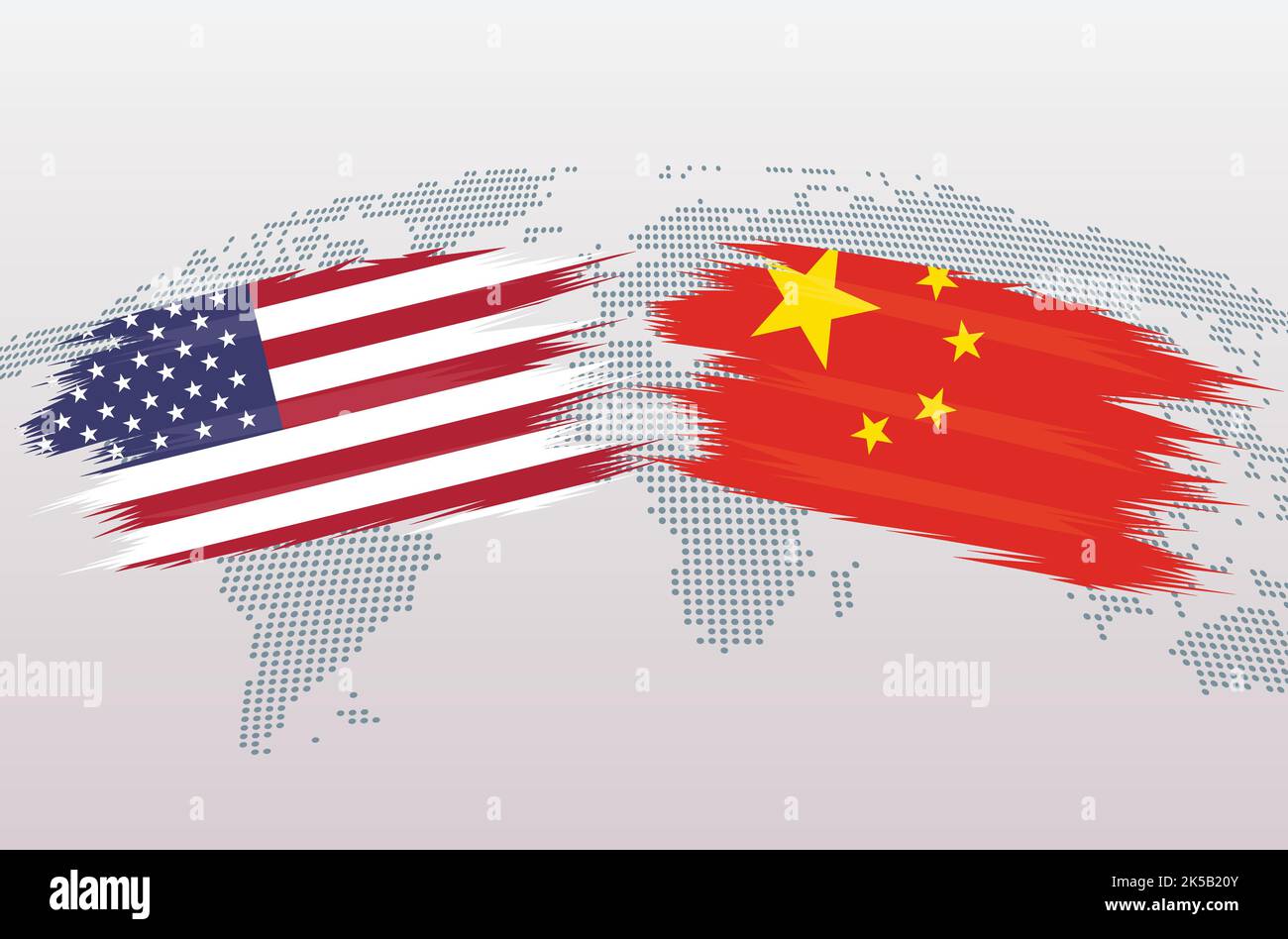America Vs. China: The Electric Vehicle Showdown And The Future Of Mobility.

Table of Contents
America's EV Strategy: Strengths and Challenges
America's approach to the EV revolution combines technological innovation with government incentives, but faces significant hurdles in scaling production and competing with China's aggressive strategies.
Government Incentives and Infrastructure Development
The US government has implemented various incentives to boost EV adoption, including tax credits and subsidies for EV purchases. Furthermore, significant investment is being channeled into expanding the nation's charging infrastructure. The Bipartisan Infrastructure Law, for example, allocates billions of dollars towards building a nationwide network of EV charging stations. However, the effectiveness of these plans remains a subject of ongoing debate. Compared to China's extensive and rapidly expanding charging network, the US still has considerable ground to cover.
- Tax Credits: While beneficial, the complexity of the tax credit system can deter some potential buyers.
- Charging Infrastructure: The current network density varies significantly across states, hindering widespread EV adoption in certain regions.
- Comparison with China: China's government support for EV infrastructure is far more extensive and proactive, leading to a much denser network.
Technological Innovation and Domestic Manufacturing
American companies like Tesla, Rivian, and Ford are at the forefront of EV technology and manufacturing. Silicon Valley plays a crucial role in driving innovation in battery technology, autonomous driving systems, and other crucial EV components. However, the US faces challenges in securing a reliable supply chain for battery materials, many of which are sourced from China. "Buy American" initiatives aim to bolster domestic manufacturing, but this requires significant investment and overcoming existing supply chain complexities.
- Battery Technology: Advancements in solid-state batteries and other technologies are crucial for improving EV range and performance, areas where American companies are making significant strides.
- Supply Chain Challenges: Dependence on foreign suppliers for critical battery materials creates vulnerabilities and risks.
- Domestic Manufacturing: Boosting domestic production requires substantial investment in manufacturing facilities and workforce development.
Consumer Demand and Market Penetration
While consumer interest in EVs is growing in the US, several factors still hinder widespread adoption. High purchase prices, limited range anxiety due to insufficient charging infrastructure, and concerns about charging times are key barriers. Marketing and public awareness campaigns play a crucial role in overcoming these obstacles. Comparing US EV sales figures to China's reveals a significant gap, highlighting the need for accelerated progress.
- Price Point: EVs generally remain more expensive than comparable gasoline-powered vehicles.
- Range Anxiety: Concerns about running out of charge before reaching a charging station remain a major barrier.
- Charging Time: Slow charging times compared to refueling a gasoline car are a deterrent for some consumers.
China's EV Dominance: A Deep Dive
China's dominance in the EV market stems from a combination of massive production capacity, aggressive government support, and rapid technological advancements.
Massive Production Capacity and Cost Competitiveness
Chinese EV manufacturers like BYD, NIO, and Xpeng are producing EVs at a scale unmatched by any other country. This mass production allows for significant cost reductions, making Chinese EVs highly competitive in both domestic and international markets. Government policies actively support domestic EV manufacturing, further strengthening their competitive advantage.
- Scale of Production: China's production volume dwarfs that of other countries, driving down costs.
- Cost-Effectiveness: Chinese-made EVs are often significantly cheaper than their American counterparts.
- Government Support: Subsidies and tax breaks for Chinese EV manufacturers and consumers fuel market growth.
Government Support and Technological Advancements
The Chinese government plays a pivotal role in promoting EV adoption through generous subsidies, investments in battery technology and raw materials, and the development of extensive charging infrastructure. China's advancements in battery technology, particularly in lithium-ion battery production, give them a strong competitive edge. The integration of EVs into China's broader transportation strategy is another key factor.
- Battery Technology Investment: Massive investments in research and development have propelled China to the forefront of battery technology.
- Charging Infrastructure: China boasts the world's largest and most extensive EV charging network.
- National Transportation Strategy: EVs are a central component of China's national plan for sustainable transportation.
The Growing Global Reach of Chinese EV Manufacturers
Chinese EV manufacturers are rapidly expanding their global footprint, exporting their vehicles to numerous countries around the world. While this expansion presents challenges related to navigating different regulations and consumer preferences, it also highlights the growing global influence of Chinese EV brands. Future collaborations and partnerships between Chinese and international manufacturers are also likely to shape the global EV landscape.
- International Expansion: Chinese EV makers are aggressively targeting international markets.
- Global Competition: The increasing presence of Chinese EVs in global markets intensifies competition.
- Export Impact: The export of Chinese EVs is reshaping the global automotive industry.
The Future of the EV Landscape: Predictions and Implications
The future of the EV industry will be shaped by rapid technological advancements and evolving geopolitical dynamics.
Technological Advancements and Emerging Trends
The next generation of EV technology will likely include breakthroughs in battery technology, such as solid-state batteries offering significantly increased range and faster charging times. Advancements in autonomous driving technology will further enhance the appeal of EVs. The integration of EVs with smart grids and renewable energy sources will also play a crucial role in creating a truly sustainable transportation system.
- Solid-State Batteries: Expected to offer superior energy density and faster charging.
- Autonomous Driving: Self-driving capabilities will enhance convenience and safety.
- Smart Grid Integration: Connecting EVs to smart grids for optimized charging and energy management.
Geopolitical Implications and Global Supply Chains
The EV race between America and China has significant geopolitical implications, impacting global supply chains, trade relations, and energy security. Potential trade disputes and protectionist policies could disrupt the global EV market. Securing access to critical raw materials and manufacturing capacity will be key determinants of success.
- Geopolitical Rivalry: The EV race is a key element of the broader US-China technological competition.
- Supply Chain Risks: Disruptions to global supply chains could impact EV production.
- Trade Disputes: Protectionist measures could create barriers to trade and hinder global EV market growth.
Conclusion
The electric vehicle showdown between America and China is shaping the future of mobility. While America possesses strong technological innovation and a growing consumer market, China's massive production capacity, government support, and technological advancements give it a significant edge. The outcome will depend on continued innovation, effective government policies, and the ability to navigate complex global supply chains. Understanding this electric vehicle rivalry is crucial for investors, policymakers, and anyone interested in the future of transportation. Stay informed on the latest developments in this dynamic market and continue to learn more about the electric vehicle revolution. The future of the electric vehicle, and the future of mobility itself, is being written today.

Featured Posts
-
 Another Simple Favor Director Clarifies Rumored Feud Between Stars
May 05, 2025
Another Simple Favor Director Clarifies Rumored Feud Between Stars
May 05, 2025 -
 Blake Lively And Anna Kendrick A Body Language Analysis Of Their Recent Interaction
May 05, 2025
Blake Lively And Anna Kendrick A Body Language Analysis Of Their Recent Interaction
May 05, 2025 -
 Over The Counter Birth Control A New Era In Reproductive Healthcare Post Roe
May 05, 2025
Over The Counter Birth Control A New Era In Reproductive Healthcare Post Roe
May 05, 2025 -
 Your Guide To Private Credit Jobs 5 Dos And Don Ts
May 05, 2025
Your Guide To Private Credit Jobs 5 Dos And Don Ts
May 05, 2025 -
 Onde Assistir Corinthians X Guarani Transmissao Ao Vivo Do Paulistao 2025
May 05, 2025
Onde Assistir Corinthians X Guarani Transmissao Ao Vivo Do Paulistao 2025
May 05, 2025
